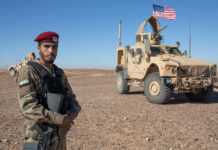
In a landmark step marking Syria’s transition from decades of authoritarian rule, President Ahmad al-Sharaa has established the Supreme Committee for the Elections of the People’s Assembly, tasked with organizing the country’s first parliamentary elections in more than a decade. The move aims to revive Syria’s long-dormant legislative life and initiate the formation of a representative government following the collapse of the Assad regime.
The presidential decree authorizing the committee’s creation outlines a hybrid system for electing Syria’s new 150-member legislature. Two-thirds of the representatives will be elected through newly formed provincial electoral bodies, while the remaining third will be appointed by the president, as stipulated in the transitional constitutional declaration.
A Fragile Process in a Divided Nation
While the committee’s establishment signals a return to institutional politics, the road ahead is complex. Much of Syria’s northeast remains under the control of the US-backed Syrian Democratic Forces (SDF), including parts of Hasakah, Raqqa, Deir Ezzor and rural Aleppo. These areas, not yet fully integrated into the national political framework, present a major hurdle to nationwide elections.
Navigating these realities, the committee is developing a temporary electoral system, diverging from traditional voting procedures. According to a June 28 statement this approach accounts for displaced populations, legal voids, and the widespread destruction of civil records. The goal is to balance fair representation with pragmatic governance during a transitional period expected to last five years.
Engaging Communities in Reform
Over the past week, the committee held regional sessions across the country to gather public input. In Homs on June 26, political, academic, and social leaders met to discuss voter eligibility and logistical preparations. Similar meetings followed in Latakia on June 29, drawing input from civil society figures, religious leaders, and economic experts.
The committee’s consultations aim to refine criteria for candidacy and representation, seat distribution, and the election calendar. Engagement with governors, local authorities and community dignitaries remains central to building trust in a process many Syrians remain wary of. For some, the decision to retain the name “People’s Assembly”—a relic of Baathist rule—has stoked fears that the new body could replicate old mechanisms of control.
Historical Echoes and New Expectations
Syria’s parliamentary tradition dates back more than a century to the establishment of the Syrian Congress in 1919, one of the Arab world’s earliest experiments in representative governance. That legacy was repeatedly interrupted by coups, colonial interference, and ultimately decades of one-party dominance under Hafez and Bashar al-Assad.
The return of activity to the People’s Assembly has rekindled both nostalgia and skepticism. Once a symbol of national ambition and later of political futility, the structure now stands as a symbol of hope for those dreaming of building a truly new system.
Whether this process results in a truly representative legislature remains uncertain. Yet for many Syrians, the mere act of preparing for elections—under a new president and a new legal framework—is a long-awaited step toward a future shaped by votes rather than violence.








